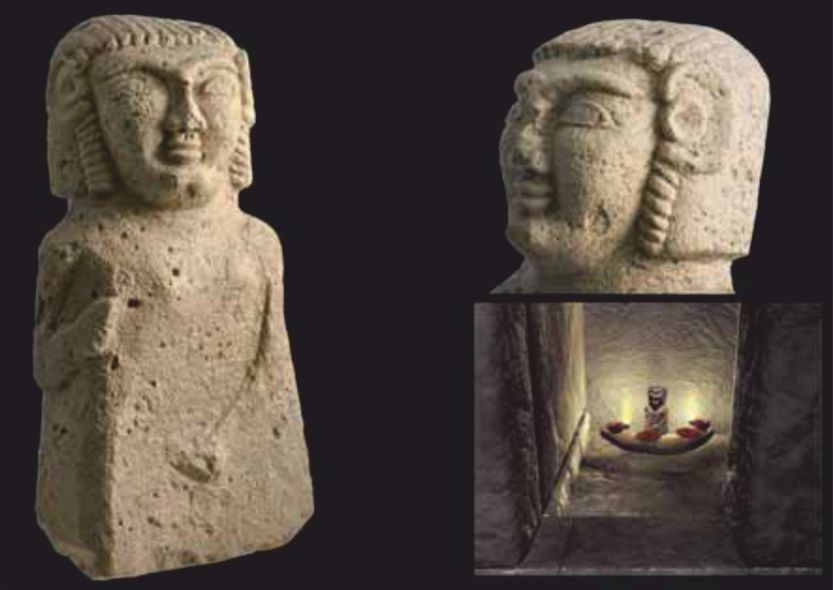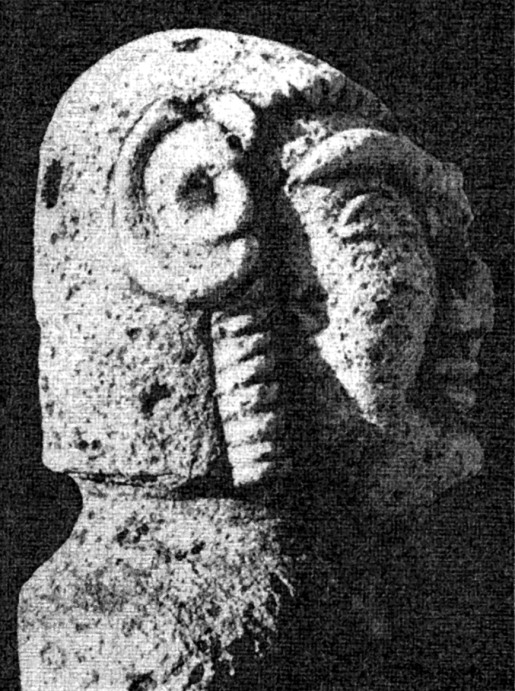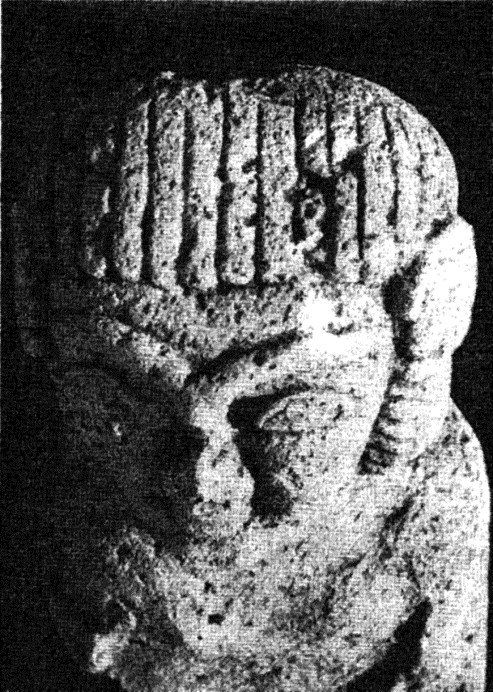Statue of Astarte
The worship statue of the goddess Astarte (or Ashtart) was found in 1964 inside a cell in the temple of the same name, and dates back to the 2nd century B.C., that was built above a Nuragic tower (figs. 1-2).


The statue is missing an arm and was repaired after ancient damage through unknown causes, and is what remains of a much older item, that dates back to the 7th century B.C. It was originally different and may have represented a goddess on a throne. The head shows us the talent and style of the first sculptor, of Phoenician origin (figs. 3-4).
The statue, made from stone from nearby Paringianu, was made locally when the Phoe-nicians were present in Sulky-Sant’Antioco and Monte Sirai. It can be seen at the Na-tional Archaeological Museum of Cagliari, while a copy can be found at the “Villa Sulcis” Archaeological Museum of Carbonia.


Bibliografia
- P. BARTOLONI, Monte Sirai, Sassari.
- A.M. BISI, Le origini della statuaria nel mondo coloniale fenicio (Per una riconsiderazione della 'Astarte' di Monte Sirai), Anales de la Univesidad de Cádiz, 03-04 (1986), pp. 107-121.
- M. GUIRGUIS, Monte Sirai 1963-2013, mezzo secolo di indagini archeologiche, Sassari.
- P. MATTHIAE, I primi imperi e i principati del Ferro, Milano.
- S. MOSCATI (a cura di), I Fenici (Palazzo Grassi, Venezia. Catalogo della Mostra), Bompiani

 VR
VR